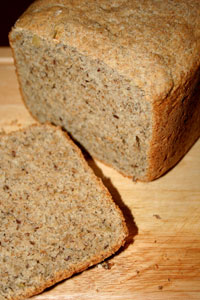 Is sprouted grain bread better for you than whole wheat? The Nutrition Lab at the Los Angeles Times weighs in: only a little. While both breads are substantially more nutritious than white bread, the nutritional differences between sprouted grain bread and whole wheat bread is minimal.
Is sprouted grain bread better for you than whole wheat? The Nutrition Lab at the Los Angeles Times weighs in: only a little. While both breads are substantially more nutritious than white bread, the nutritional differences between sprouted grain bread and whole wheat bread is minimal.
Whole-wheat bread is made from wheat kernels that are ground into flour. The flour in white bread is made from just the endosperm of the wheat kernel. The wheat lacks the germ and shell, and is therefore stripped of much of its nutrient.
In sprouted-grain bread, the wheat kernels are allowed to sprout before they are ground down and then baked into bread. Because the sprouted grains are not made into flour, this type of bread is sometimes call “flowerless”–although it still contains gluten. Sprouted-grain bread can be made from a variety of sprouts, including millet, oat or soy.
Sprouted-grain bread made from an array of grains can provide a complete set of amino acids, making it a good choice for vegans and vegetarians. However, the amount of calcium, iron, niacin and even fiber is about the same in whole-grain bread as it is in sprouted-grain bread.
In the end, eating sprouted-grain bread is a matter of personal preference. It has an earthy taste that some people may prefer.
Also Read:
Seven Ways to Get Your Kids to Eat More Whole Grains
Why You Should Eat Whole Grains
